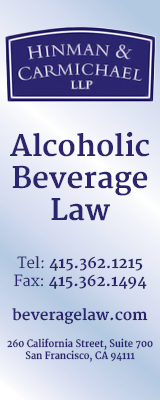FREE! Subscribe to News Fetch, THE daily wine industry briefing - Click Here
![Banner_Xpur_160x600---Wine-Industry-Insight[63]](/wp-content/uploads/Banner_Xpur_160x600-Wine-Industry-Insight63.jpg) |
 ALSO SPONSORED BY: 
Wine Industry Insight |
 |
What the heck IS AgTech?
About this article’s author: Lewis Perdue’s AgriFoodTech background
What the heck IS AgTech?
Two charts (below) look at the taxonomy of what AgTech includes.
The following two charts summarize one top investment company’s:
- Category deal flow, and,
- Where wine fits in.
Deal flow by category

Where wine fits in (0.3% of 2018 AgTech VC)

Other than Chinese e-commerce wine giant 1919, only two other companies show up as wine-related: Drizly and Wine.com. They count for 0.3% of the total of 2018 AgTech investment
But … Wine IS Ag… it just needs the right Tech
However, 2018’s VC investment of $16.9 billion includes a lot more AgTech companies that are relevant to wine.
After all, wine begins with agriculture: Planting, farming and harvest segue to biotech (fermentation), food processing, packaging, transport, marketing and sales.
Our new series will be sort through every category to identify the companies and investments that are most relevant to wine and viticulture as well as to investors
Very few companies in the vast universe of AgTech companies (see graphics below) emphasize or even mention wine or viticulture on their websites. In fact, wine is rarely mentioned even by companies whose products, services and technologies are relevant.
Our AgTech effort will be different from our previous series
Because venture capital and financial transparency are such novelties in the wine business, our previous effort focused more on the investment structure, rounds of financing and investors and less on the companies themselves. As uncommon as it is, subscribers were astounded that outsiders might be interested in investing in wine as an industry.
Because of that, this new series will search for new, useful technologies and companies which have the potential to increase efficiency for the wine industry from dirt to the consumer’s first sip.
The 10,000-foot view of AgTech
As mentioned above, the taxonomy of AgTech varies from place to place and firm to firm. The categories overlap, but the following two views will offer a viewpoint showing the breadth of the AgTech category and some of the companies that play in each sector.
Defining by Technology Categories
Source: Finistere Ventures — “2018 Agtech Investment Review”
Categories from image, below (clockwise from the top).
- Animal Technologies
- Imagery
- Sensors and Smart Farm Equipment
- Precision Ag
- Ag Marketplace and Fintech
- Indoor Ag
- Crop Protection and Input Management
- Plant Sciences
NOTE: There are two images below (necessary to capture the full graphic). Right click on each of the graphics to view much larger images.


Defining by Functional & Market Categories
Source: “Agrifood Tech Funding Report: Year Review 2018 — Agfunder.Com”

Defining by Tech First Then Ag
Source: SVG Ventures-THRIVE

Defining by Ag First then maybe involve tech of some sort
Source: Grow-NY Competition administered by Cornell University
The “food and agriculture space” includes food and agriculture companies at every point in the agri-food value chain that are working to serve a growing population, while striving to employ sustainable, environmentally conscious, and/or healthy methods. Examples of food and agriculture startups include, but are not limited to, companies that:
- Research and design new crop varieties
- Offer new methods and/or tools to support the efficient growing, monitoring, and harvesting of crops and livestock
- Offer new and/or improved methods for producing, preparing, and packaging food and beverage products or ingredients
- Represent high-growth opportunities for new and innovative food and beverage products or ingredients
The following businesses are NOT eligible for the competition: investment vehicles that invest in the securities of other entities, residential real property and retail businesses, sports venues, gaming and gambling businesses, places of overnight accommodation, past Grow-NY cash-prize winners, or entertainment-related establishments. For this purpose, “retail business” means a business that is primarily engaged in making retail sales of goods or services to customers who personally visit such facilities to obtain goods or services. In addition, generally excluded are the following: buy-outs, roll-ups, real estate syndications, tax shelters and franchise-based outlets.




